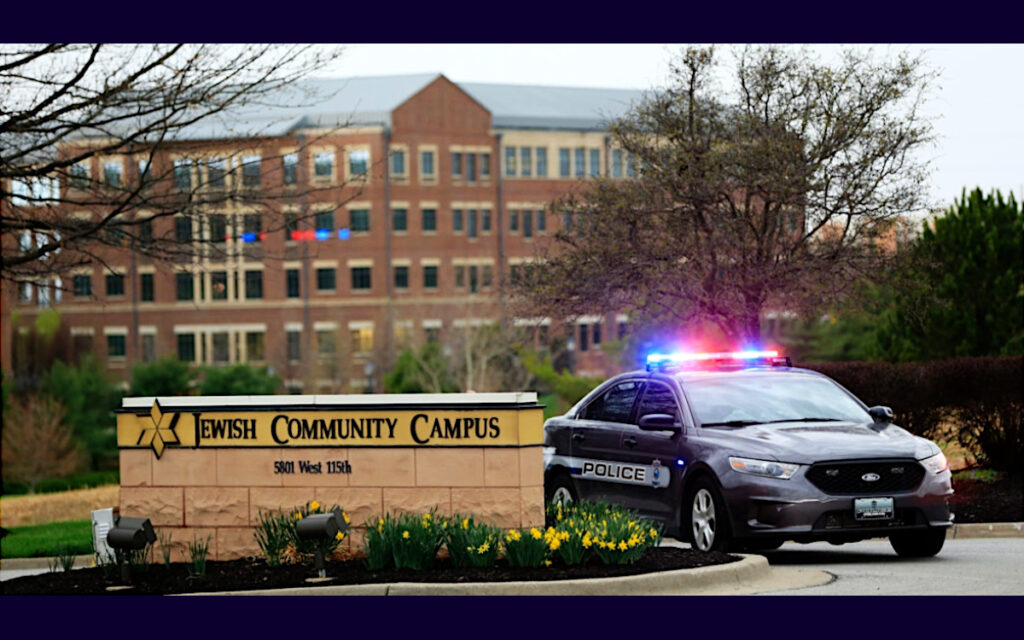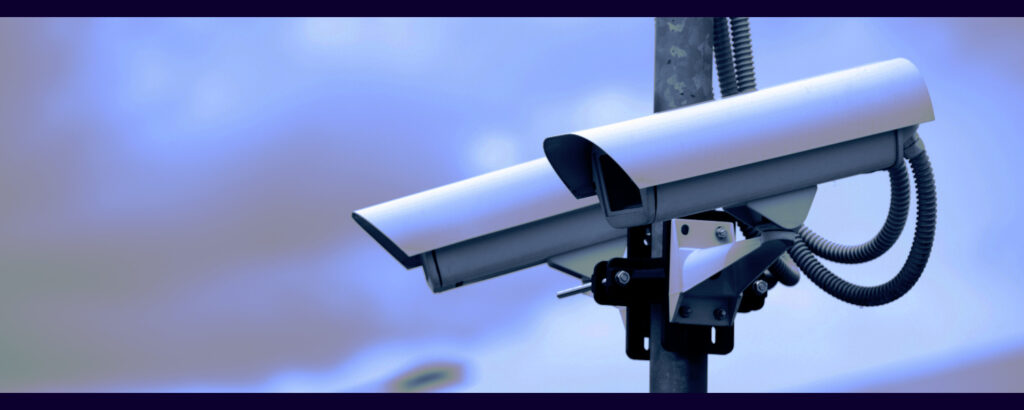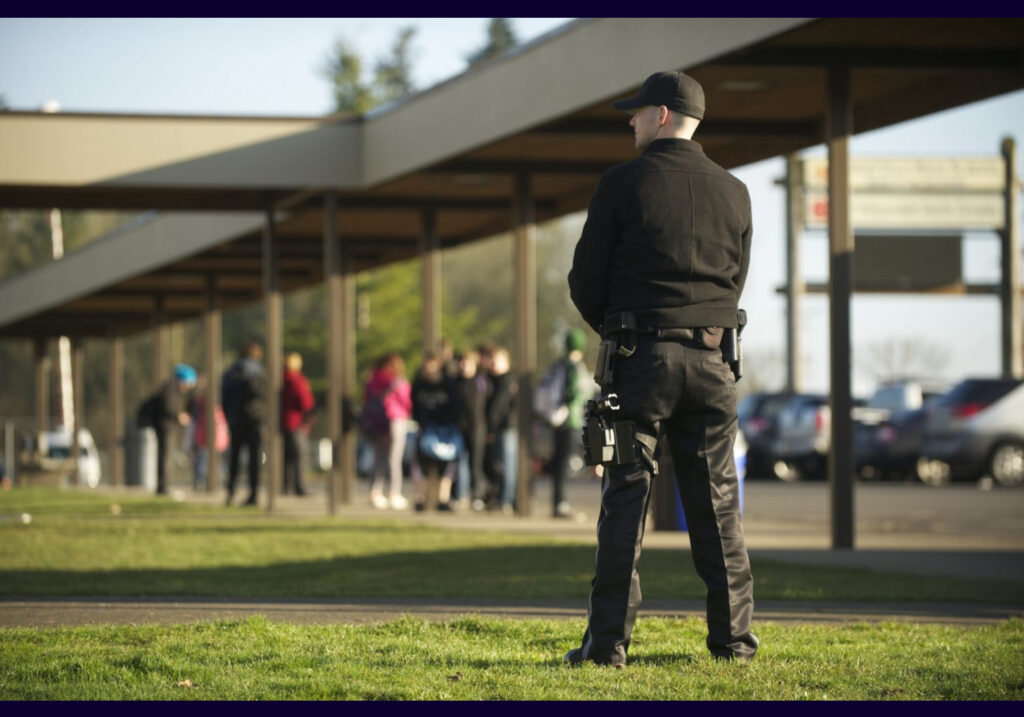February 16th, 2024
Sgt. Maj. Ben Kerido (Israel Defense Force Reserves)

For a shareable or printer-friendly version, please CLICK HERE.
A Serious Warning
A large collection of both former and active law enforcement and government officials of all political leanings, including from the FBI, have recently emphasized that there is an extremely high-risk of major terror attacks to be perpetrated on American soil in the near future. A former top-level government official has strenuously declared that he believes that the likelihood that terrorists will strike within the continental United States is “100%.” This same individual likewise predicted a massive surge in terrorist activity in the Middle East – especially kidnappings – merely three weeks before the attacks in Israel by Hamas’ army of terror on October 7th, 2023.
Accordingly, global antisemitism has increased by 235% since October of 2023. And other faith-based institutions (in particular those who are supportive of Israel) are also at a significantly increased risk of attack.
As a combat non-commissioned officer in an IDF special forces battalion, I have served / am serving on both the front lines of the Gaza Strip and the Lebanese border. I have also functioned previously as a US Department of Defense contractor, liaison to the US Department of Homeland Security, and community security organizer (Jewish and otherwise) on a national level. I do not have any access to confidential or “top secret” Israeli or American intelligence materials. However, I can say anecdotally that I firmly believe based on my “highly educated opinion” that there is an extremely high risk of terrorist atrocities being committed in the United States at some point in the year 2024, and probably within the next 3 – 6 months.
Be prepared! I truly hope and pray that I (and dozens of other experts) are incorrect. But even a small amount of foresight and preparation could mean the difference between life and death for you, your families, and your communities.
When terrorists strike, they often target faith-based institutions and/or vital infrastructure. This includes, for example, synagogues, churches, schools, and hospitals. The following document is a step-by-step plan to dramatically enhance the safety of your community.
Plan Highlights
- Facility hardening (e.g. replacing weak doors, building a fence, installing protective film on windows, etc.).
- Internal security protocols (i.e. ensuring staff follow procedures to deny unauthorized persons entry, etc.)
- Developing relationships with local law enforcement.
- An armed security presence (ideally with hired professionals or at least mature, responsible, and trained members of the community, if possible with a military and/or law enforcement background).
- Emergency response team and first aid preparation (e.g. equipping and coordinating with qualified members of the community, such as nurses and doctors, to provide triage care and first aid in the aftermath of an attack).
- Community awareness and training (e.g. safety workshops and “fire drill-style” exercises regarding locking doors, emergency exits, avoiding and/or eliminating threats, etc.)
Defensive Facility Hardening
The first step to ensuring that your community is safe is to harden your facility. The Israel Defense Force strongly adheres to this approach, and it is a cornerstone of Israeli security. In fact, the horrors of Hamas’ October 7th attacks were only made possible by a shocking (and heretofore rather inexplicable) failure of our defensive measures in the region bordering the Gaza Strip. At any rate, the concept is simple:
If you keep a threat out of your community, then they can’t harm you.
Every facility is different in layout, structure, etc., but here are a few considerations for defensive measures that can go a long way to keeping your community safe.
- Walls and/or fences
- Gates and doors with new, updated locks as well as fob and/or push-button mechanical locks (for Shabbat, the Jewish Sabbath)
- Intercom systems (audio or video) with remote unlocking of the entrance
- Strong, reinforced doors (or, at the very least, replace that rickety flimsy back door that nearly every old community building has)
- Alarm systems
- Reinforced glass with shatter-resistant, protective film (it works far better than you might think, and in many cases isn’t terribly expensive)
- CCTV camera systems
- Other similar aspects

Internal Protocols
The best (and most expensive) security upgrades become completely meaningless unless the staff and members of a synagogue, church, school, etc., all utilize them properly. The most sophisticated alarm system in the world is utterly worthless if it is never turned on. This may sound obvious, but I knew of a school that complained about an incident in which an unwanted individual entered the premises just weeks after the school invested over $25,000 in a highly advanced system of reinforced doors, intercoms, remote-controlled magnetic locks, etc. So how did the intruder get in? The school staff felt that properly screening people with the intercom and buzzing them to enter was a hassle, so they instead propped the door wide open all day long with a brick. As should have been obvious, the problem wasn’t the facility hardening and high-end security system; it was the lack of adherence to even basic security protocols.
Thus, every community facility should establish reasonable and effective security protocols that are followed by all. Otherwise, expending money on defensive measures becomes meaningless. When developing these protocols, it is probably a good idea to consult with a legitimate security firm and/or your local police department (especially if you are on a budget). Most importantly, there should be strict guidelines for who can enter the building. It should be restricted to known members of the community unless approved by the local leadership (rabbi, rebbetzin, president, pastor, principal, etc.)
As a side note, it must be understood that many terrorist-type attackers are at least somewhat opportunistic and can be dissuaded even by visual deterrence. What that means in simple terms is that a hostile antisemite, for example, is far more likely to attack a synagogue that is left wide open without a care than a synagogue with fences, gates, cameras, and a security professional (or even a congregant) watching the door. In this context, a hardened facility and proper security protocols have a solid chance of not only physically repelling an assailant, they reduce the chances that a dangerous attacker will even consider your community as a viable target in the first place.
Terrorist attackers are often predators looking for vulnerabilities. Remove all visual signs of vulnerability, and they will often move on to another target (or even rethink their plans altogether).
Additionally, the community must be educated on what to do in the event of an attack. Schools conduct consistent fire drills for a reason; when an emergency occurs, chaos can be deadly. Develop a plan (best done with the help of a security consultant and/or police officer) and make sure the community knows that plan. Even just making sure that your community is aware of the emergency exits and the locations of fire extinguishers in the event that an attacker commits arson against the facility can mean the difference between life and death. Other concepts to be considered for an emergency plan include evacuation to “safe rooms,” i.e. places in the facility with heavy doors and solid locks where people (especially children) can be relocated in the event of an active shooter, to provide emergency first aid, and more.
Relating to the concept of visual deterrence, a suggestion for consideration is a visible security presence or patrol, as well as clear signage, e.g. “This premise is protected by armed security.”

Law Enforcement Relationships
This is a potentially highly effective (and very inexpensive or even free) means of dramatically increasing the safety of your community that is often overlooked. Most urban areas have police officers and/or other local law enforcement on active patrol. Reach out to your relevant police department and work to establish a solid rapport and relationship with your local law enforcement personnel, especially those patrolling the streets. More often than not, police officers are driving past your synagogue, church, school, or hospital just as a matter of their patrol functions. Upon invitation, they are often more than willing to stop by for a while. In many cases police officers pause their patrols and wait in an empty parking lot for 911 calls to come in. They might even be willing to wait for calls in your parking lot on occasion. The value of a visible police presence in your community, even randomly and sporadically, is immeasurable.
Additionally, requesting the police to stop by your synagogue or church during services is usually welcome by most law enforcement agencies. (A word of caution: don’t rely on the arrival of police officers as a replacement for other security measures, especially armed guards, since in my experience they unfortunately don’t generally show up at a precise time, or they might be distracted by an emergency elsewhere.)
As a “pro tip,” I would recommend making quality refreshments (like coffee, tea, bagels, etc.) available to local law enforcement officers to further incentivize visitations and a visible presence. And it’s a nice way to give back in a small way to the protectors of your community besides.
To be clear, if you wish to build a relationship with your local enforcement agency for any reason, you must actively reach out to them. Generally speaking, they will not reach out to you uninvited. Most police departments have a community liaison and/or public relations officer, and that’s a great place to start.

Response & Reactive Measures
Before we get into a discussion of armed security, let’s look at some other vital response functions. I recommend that the following roles (and others as needed) be tasked to separate congregants (as your community is able):
- Evacuation leader: responsible to bring order to the chaos and ensure that people are directed to the proper emergency exits (especially children).
- First-aid provider: responsible to administer life-saving first aid until paramedic teams can arrive. (Most communities will have qualified health care professionals, such as doctors and nurses, in attendance.)
- Fire repeller: responsible to know where the fire extinguishers are and to use them immediately in the event of arson or a firebomb attack.
- 911 notifier: responsible to call 911 and clearly notify them of an attack or incident and clearly communicate to them what is happening in real-time.
A good practice would be for at least the “911 notifier” to have a cellular phone on them. And for Jewish communities, this includes shabbat and yom tov (Jewish Sabbath and holidays). For Halachic (Jewish custom) considerations, one or more “emergency phones” could be used, which are simple “TracFones” or “kosher” phones belonging to the synagogue that have no purpose or functionality besides making simple phone calls. The idea is that this phone now becomes a pikuach nefesh (life-saving) device having no purpose other than calling 911 in an emergency, rather than a muksa item for checking Facebook or texting friends. (Note: I am not a rabbi; please check with your local rabbi or other relevant authority to ensure Halachic compliance.)

Armed Security
Often the biggest point of contention in a community when discussing security measures (besides financial burdens) is the notion of persons having guns on synagogue, church, and/or school property. This is undoubtedly a complicated matter, but in light of the current threat, I unfortunately have no choice but to strongly recommend that all at-risk communities utilize an armed security team in light of the current threat.
An armed security force that is professionally contracted can be an enormous asset. If the right company is hired, then only highly-trained and fully-insured personnel will be sent to your facility. In the absence of a contracted armed security firm, then the best practice would be for a mature, responsible, and trained community member to be designated as the armed security officer who carries a weapon (open or concealed, depending on the local laws and facility needs). This person should be your most “tactically proficient” individual, such as a retired police officer, an IDF or US military veteran, etc.
If there is no such person present, then an individual who is both very mature and physically competent (such as a relatively young and healthy rabbi, pastor, president, board member, principal, etc.) should be tasked with acquiring the firearm permits and undergoing a training and safety program. Avoid giving the green light to a “wannabe hero, pretend cowboy” to be your armed community member, and be sure to check with your local and state laws to ensure full compliance. Firearm regulations vary wildly from state to state, and there are often very significant variations between carrying firearms in public as opposed to the private property of your facility. When in doubt, contact an authoritative law enforcement representative or legal expert.
As stated repeatedly, it is extremely important that your armed security personnel be fully trained. In addition to firearm usage, this training also includes ensuring that they are able to eliminate a terrorist threat in the safest manner possible, being very careful to avoid “friendly fire” and hitting a community member by mistake. To be clear, I do not feel that the “solution” to this concern is simply not utilizing armed security. The threat of unmitigated murderous terrorist attacks exceeds this concern. But it should still be a paramount aspect of training for responding to a terror attack within your community.
Non-lethal weaponry, such as high intensity pepper spray and batons, can be of value. However, in light of the current and unique threat, that is not my present advice. In any case, tasers are a bad idea and not recommended at all. Tasers are notoriously ineffective and difficult to use, especially on individuals with drugs in their system.
For instance, tasers have little effect on persons under the influence of Captagon, the “jihad drug” used by both ISIS and Hamas during their atrocities. Even worse, in a hostage situation tasers can be easily turned against the user or other congregants to incapacitate them to easily facilitate kidnappings.
Firearms in a synagogue, church, school, hospital, etc., have a lot of community ramifications, including political. Without getting into all of that, allow me to present four case studies:
- Tree of Life, 2018: No armed security professionals, no armed community members.
11 killed, 6 wounded. No resistance to the attacker until law enforcement arrived 14 minutes after the attack began; the SWAT team arrived nearly 45 minutes later.
- Poway, 2019: No armed security professionals, but armed and unarmed community members present.
1 killed, 3 wounded. The assailant abandoned the attack when confronted by an unarmed former US Marine and further fled when faced with resistance from an armed off-duty Jewish Border Patrol agent.
- West Freeway Church, 2019: Armed community members.
2 killed. Attacker neutralized immediately by a 71 year-old churchgoer who was part of their organized internal security team. More than 240 persons were present yet unharmed.
- Colleyville, 2022: No armed security professionals, no armed community members.
4 taken hostage. After a ten hour standoff, law enforcement stormed the synagogue and killed the attacker after the rabbi assaulted him with a chair at a vulnerable moment.
While my conclusions might be controversial, an anecdotal analysis of these types of attacks indicates that trained and responsible congregants with concealed firearms can and do stop attacks immediately. And a professional armed security presence seems to consistently prevent attacks from happening in the first place due to visual deterrence, etc. Those victim communities without some kind of armed security had no choice but to fight back at a severe disadvantage, and/or wait for an effective law enforcement response, which can take anywhere from fifteen minutes to ten hours. (And that’s a long time to be at the mercy of armed terrorist attackers and even rapists with guns, knives, explosives, or other weapons.)
I strongly encourage all at-risk, faith-based communities (especially Jewish) to very seriously, carefully, and objectively consider the option of an armed security presence, in particular for the next 12 months.
Conclusion
Each at-risk, faith-based community is unique, and therefore the measures and best practices to be taken to ensure the security and safety of all members of that community are equally unique. Most successful strategies will incorporate the concepts of defensive protective measures, internal security protocols, relationships with local law enforcement, and an effective response contingency including armed security and medical care.
As a side note, I want to share my beliefs as a Torah-observant Jew that both tefillah (prayer) and unity are absolutely vital to our ongoing safety in the face of such dire threats. My spiritual beliefs are that we cannot expect Divine protection from the Most High without beseeching Him for protection as well as treating one another properly and minimizing unnecessary division.
Please reach out to your local law enforcement and/or a legitimate, qualified security consultant to discuss this matter further. And while my ability to communicate freely is limited due to my ongoing service with the Israel Defense Force in combat operations, please also feel free to reach out to me for additional thoughts and comments. I will respond as I am able.
Please feel free to circulate this security plan and bulletin as needed, attributing credit to Sgt. Maj. Ben Kerido (IDF-Reserves) and Lehavdil.
For a shareable or printer-friendly version, please CLICK HERE.

